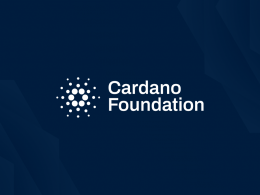The Cardano Sidechain Toolkit is a set of tools and protocols that allow developers to easily create, manage, and deploy sidechains on the Cardano blockchain.
The release of a sidechain toolkit by IOG is a major milestone in the development of Cardano’s technology. With its introduction, businesses, and organizations can now take advantage of the benefits offered by sidechains, such as increased efficiency, flexibility, and scalability, while leveraging the security of Cardano.
In this article, we will explore everything you need to know about the Cardano Sidechain Toolkit.
What is a Sidechain?
A sidechain is a separate blockchain that runs parallel to a main blockchain, which depends on its main chain and is connected to it by a bridge allowing for assets to be securely transferred from one blockchain to another.
This enables the creation of specialized blockchains with specific features or capabilities while still utilizing the security and trust of the main blockchain.
What are the benefits of the Cardano Sidechain Toolkit?
Cardano is the most decentralized PoS blockchain, with thousands of independent stake pools and millions of wallet addresses. Sidechain provides a secure and decentralized blockchain like Cardano to be more flexible and allow experimentation.
The Toolkit fosters the following characteristics:
- Scalability: The Cardano Sidechain Toolkit enables developers to create sidechains that are optimized for specific use cases. This leads to a more scalable and efficient blockchain environment, as the sidechain can handle a higher volume of transactions.
- Security: The Cardano Sidechain Toolkit provides a secure environment for developers to test and deploy new applications, features, and functionalities. This helps to reduce the risk of security breaches and ensures that the applications deployed on the sidechain are secure and trustworthy.
- Interoperability: The Cardano Sidechain Toolkit allows for seamless integration between different sidechains and the main blockchain. This enables the creation of a highly interoperable environment, where different applications and functionalities can work together seamlessly.
- Customizability: The Cardano Sidechain Toolkit provides developers with a high degree of customizability, allowing them to tailor their sidechains to specific use cases and requirements.
Overall, Sidechains extend the main chain’s capabilities, making the blockchain more scalable and extensible while maintaining stability and security. They create a more interoperable environment for different applications and communities to have their own sovereignty and design choices. And they provide a testing ground for new innovations and applications before implementing them on the main blockchain.
Would the sidechain have its own consensus?
Yes, the sidechain operates with its own consensus algorithm and distinct features. It is linked to the main chain via a bridge that facilitates the transfer of assets between the chains.
But the main chain provides the security for the sidechain to determine the finality of its blocks through a consensus mechanism that relies on the security of the main chain.
What are the key Components of the Cardano Sidechain Toolkit?
The Sidechain Toolkit is a set of components and recommendations to extend Cardano’s capabilities. The toolkit enables blockchain developers to deploy customizable solutions that meet their technical and social requirements. It consists of the following components:
- Main-chain Plutus scripts: These scripts, deployed on the Cardano main chain, determine the flow of a sidechain, including the registration of block producer candidates, the minting policies of the sidechain’s token, and the functions for moving tokens.
- Chain follower: This component is capable of observing the state of main-chain events that govern the sidechain and communicating them to the sidechain. The current version of the toolkit uses a Cardano DB Sync instance for this purpose.
- Sidechain-specific module: This component of the sidechain node validator filters and transforms data received from the chain follower, presenting it to other components for processing according to the governing rules of the sidechain technical specification.
- Technical specification: The Cardano sidechain client specification is a comprehensive document describing the architecture, use cases, and implementation of the sidechain components, including an example EVM implementation to showcase a possible implementation of the specification.
The toolkit includes a technical specification document that provides an introduction and guide to Cardano sidechains. The document empowers developers and provides a foundation for custom sidechain development.
How does the toolkit help the Cardano ecosystem?
Blockchain developers, DApp developers, stake pool operators, and DApp users can all benefit from custom sidechains.
The toolkit components easy deployment of a variety of functions:
- The transfer of data and assets between the main chain and custom sidechain.
- Support various consensus protocols and ledger rules and languages.
- Leverage the existing stake pool community secure small chains.
These features allow developers to create blockchains for specific use cases by leveraging Cardano’s security and decentralization.
Will 2023 see a proliferation of sidechains on Cardano?
Cardano already sees an incredible amount of development activity when it comes to sidechains.
Here are some of the developments regarding sidechains :
World mobile’s Cardano sidechain using Tendermint (Cosmos) brings more interoperability to the Cardano ecosystem
MIlkomeda EVM Sidechain on Cardano is already up and running for almost ten months now
Shareslake sidechain brought the first stablecoin to the Cardano ecosystem
Conclusion
The Cardano Sidechain Toolkit provides a secure, scalable, and sustainable environment for the development of decentralized applications and smart contracts. It enables developers to test and deploy new functionalities, features, and applications without affecting the main blockchain. With its suite of tools and protocols, the Cardano Sidechain Toolkit provides a high degree of customizability and interoperability, making it a powerful tool for developers.
As it is easier now for developers to deploy sidechains on Cardano with the sidechain toolkit, we anticipate some of the Cardano dApps deploying their own sidechains on Cardano in the near future.
As Appchains provide a flexible and customizable environment for tailor-made solutions, sidechain would be seen as a compelling solution by many dApp teams on Cardano. So, 2023 could be the year where we see some major dApps deploying their own sidechains on Cardano.
References
https://docs.cardano.org/cardano-sidechains/basics/introduction-sidechains
https://docs.cardano.org/cardano-sidechains/sidechain-toolkit/introduction
https://cointelegraph.com/news/cardano-ecosystem-set-to-expand-with-custom-built-sidechains
https://www.coindesk.com/learn/an-introduction-to-sidechains/










